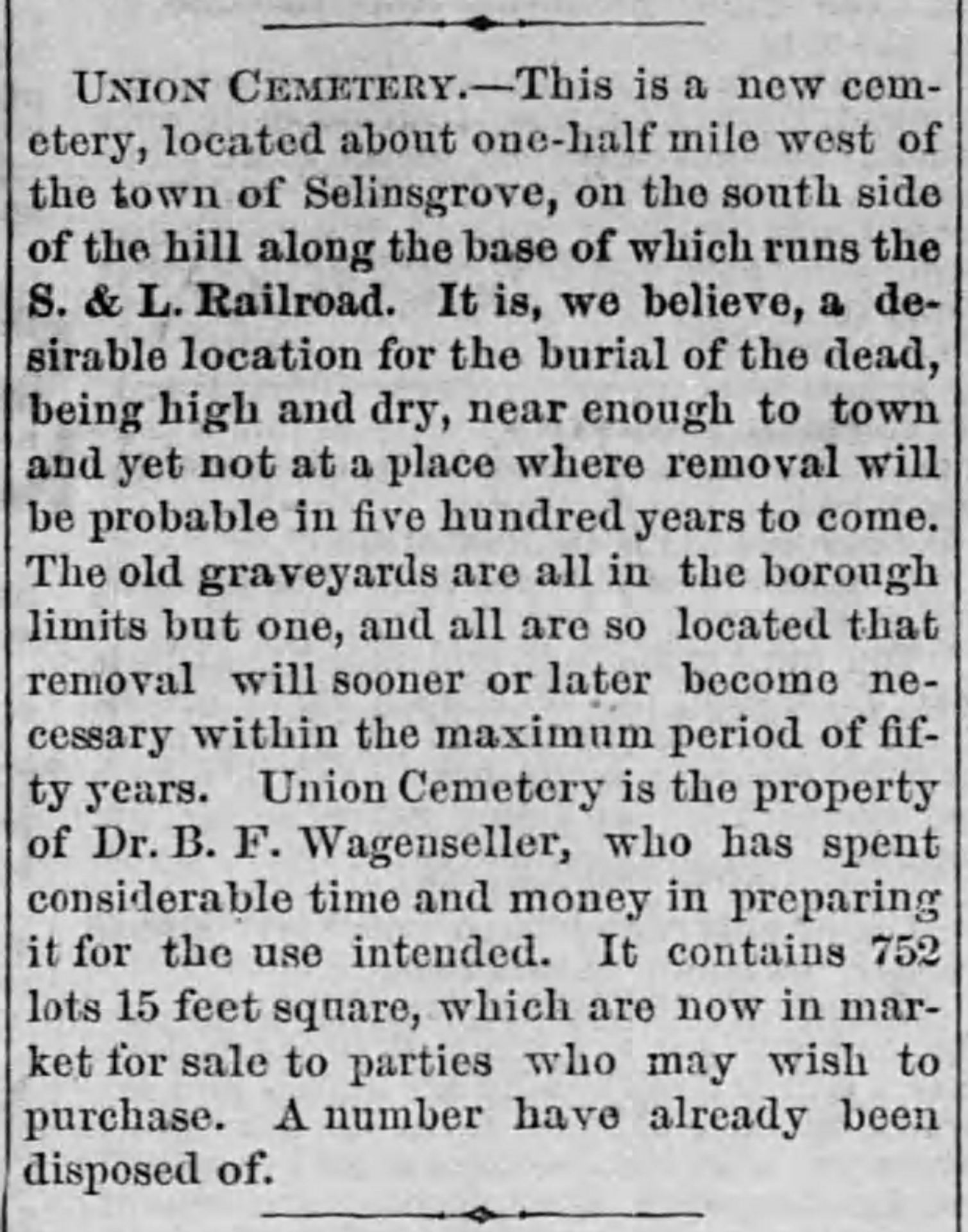Historian Jeffrey Smith argues that the garden-like rural cemeteries of the late nineteenth century are places of paradox: “natural but designed, urban but rural, sacred yet secular.”
Although it’s far-fetched to claim that Union Cemetery, to the west of Selinsgrove, is urban, Smith’s observations can help us think about the meaning of this site. When it was opened in the 1870s, the cemetery had both practical and aesthetic attributes. As the Selinsgrove Times article from 1872 shows, local residents wanted high ground, to avoid burying the dead in low-lying places that might flood periodically. And they were worried that local cemeteries were too close to the growing town, forcing them to consider relocating existing graves. Dr. Benjamin Wagenseller’s land, divded into over 700 burial plots, seemed to be ideal.
The location was also pretty and serene, which made Union Cemetery an especially good spot for contemplation. Residents whose loved ones were buried on the hill could visit the gravesites amid the natural setting, with wide horizons and striking views. In 1878, the editor of the Snyder County Tribune printed a description of the scene on an early summer Sunday. Click below to hear how the editor blended scenic description with meditation to make the cemetery a site of spiritual awakening.
An 1878 description of Union Cemetery
Union Cemetery Biographies
A collection of biographies of people buried in Union Cemetery. Written by students in the “Selinsgrove Stories” course in Fall 2022
